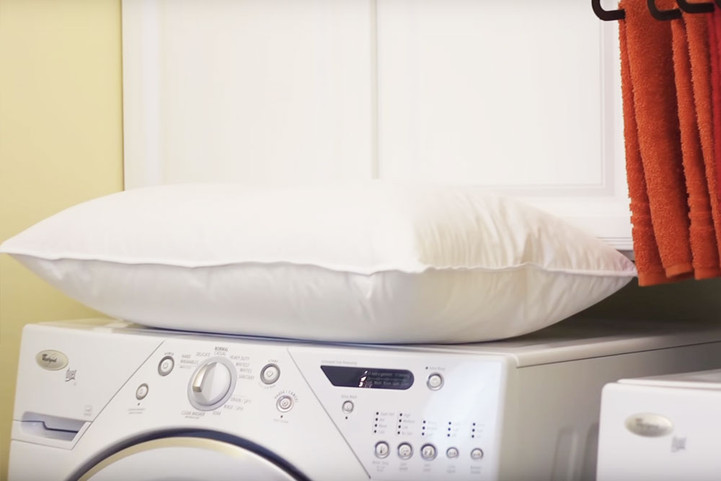Posted by Aline Martin O'Brien on Feb 10, 2020
How to Care for Your Pillows
Benjamin Franklin said, “Fatigue is the best pillow,” but we all know our quality pillows are a valuable asset and are essential to a good night’s sleep. Bear in mind, however, that because you are spending an average of seven to eight hours a day using your pillows, they need regular care. Here are a few tips to help you care for your favorite sleeping accessory.
Daily Pillow Care
First of all, consider adding a pillow protector under your pillowcase. This gives you two layers of protection so your pillow is always protected, even when you are washing the pillowcase. A pillow protector keeps your pillow feeling new longer. Additionally, it is often easier to wash a pillow protector than to wash a pillow. The pillow protector is a supplementary layer of protection for your pillow against allergens, bacteria, and grime that can be transferred to the pillow. Fluff your pillow into its original shape every morning, especially if you are using down alternative pillows. When you are washing the pillow protector take your pillow and place in the dryer for 15 minutes. This should be done every two to four weeks. This will reduce moisture inside the pillow and help to fluff it up.
When To Wash Pillows
Pillows should be washed regularly. With time they collect dust mites, oil, spores, fungi, dead skin cells, etc. So even though you should replace them every few years, in the meantime you should wash them regularly for basic hygiene. Downlite offers easy care pillows that you can wash and dry at home without harming their quality and durability.
Down pillows should be washed at least once a year, preferably every six months, and replaced after several years. If you have allergies and are using a down alternative pillow, we advise that your pillow be laundered every two months. Your fiberfill pillow should be replaced every 12 months if a basic polyester model and 18 months for down alternative pillows.
Washing pillows
First, remove the pillowcase and pillow protector and check the manufacturer’s instructions on the label and follow the recommendations.
Second, inspect the pillow closely and make sure that it does not have any holes, worn areas, or other breaches that would allow the filling to escape during the washing. It could ruin your pillows, your washing machine, and your day.
After this preparation, start filling your water and mixing the soap into it. For down pillows, we advise using only a small amount of down specific cleaner (or 1 teaspoon of Dawn®), in order to clean the fabric and avoid stripping the down of its natural oils. The same can be done for fiberfill pillows. You should wash your pillows two at a time to maintain balance in the washing machine.
If you are using a top loading machine with an agitator, we recommend you position the two pillows vertically to avoid them being wrapped around the agitator. You may add several tennis balls in socks to keep the fabric of the pillows moving during the cycle. Use warm water and a delicate cycle. At the end of the cycle, you should run a second full cycle of clean warm water with no soap to ensure a thorough rinse.
Drying pillows
Once washed, the process of drying your pillows will take several hours. You do not want to rush this phase. The wet fibers or down are fragile at this point. Place the pillows in the dryer with drying balls or tennis balls in order to fluff the pillows and protect them from clustering or clumping. Program your dryer at high heat and every 20/30 minutes, shake, tap, and fluff the pillows and put them back into the dryer until they are completely dry. Expect to dry pillows for 3-4 full cycles. Be sure your pillows are completely dry, as damp pillows generate mold. After you are certain that your pillows are completely dry, store them in a dry place if you are not using them. For down pillows, we recommend not using plastic to store them, but a cotton cover, such as a clean pillowcase.
Now you are ready to place back in protector, pillowcase, and on the bed. For more information, check out www.beddingcare.com.





